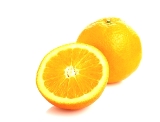- Home
- Blog
- Healthy Eating for Wellness
- The juice trap
The juice trap
Written by Catherine Saxelby
on Friday, 28 November 2008.
Tagged: fresh food, healthy eating, juice, nutrition, portion size, vitamins, weight loss

Do you love to sip a freshly-squeezed juice of orange, carrot and wheatgrass? Or grab a mango and yoghurt smoothie as a quick lunch-on-the-run? Juices are healthy and fat-free but they're a trap for the health conscious. Read on to find out why ....
Juice - the new fast food
Juice bars have made juice the new fast food of the year - vitamin-packed, fresh, made while you wait and seemingly so good for you. The juice bar cult, which includes the amazingly successful Boost Juice and Nudie juices, has created a whole new market for fresh juices and smoothies. They are often enhanced with a shot of wheatgrass, guarana, green tea, echinacea or ginseng. So where should they fit in a healthy eating plan?
The raw food revolution?
Fresh juices give the appearance of ultimate health. After all, they were part of the raw food movement and have long been advocated by natural health practitioners for maximum health.
Juices are said to be an integral part of detox regimes, used to "cleanse the digestive system", "draw out toxins" and alkalinise the body. Some of these claims are groundless, but are capitalised on by juice bars to highlight the virtues of juice.
Juices - lots to love
There's no doubt that freshly-squeezed 100% juices with no added sugar offer many a nutrition bonus:
- Juices are healthy and natural.
- They have virtually no fat and (if made in front of you) are made from fresh fruit.
- Juices retain the maximum content of vitamins, minerals, enzymes and antioxidants. They are rich in all the nutrients of fruit and vegetables namely vitamin C, beta-carotene (which is converted to vitamin A in the body), folate, vitamin B1, niacin, vitamin K, potassium and magnesium.
- They pack in nutrition in a form that's easy to drink - this is a boon for fussy eaters who won't touch any fruit or vegetables. Or ideal for someone who is underweight or is recovering from chemotherapy and can't eat much.
- Juices are better than other drinks that don't provide nutrition (soft drinks or cordial, for example). It's better to add a glass of juice to your meal and get enough nutrition - than not have any juice at all in your busy day and not get enough nutrition. But let's not have a litre of juice a day, especially if we need to control our weight!
Nutritious but easy to overdo
Juices represent fruit in concentrated form that's all too easy to over consume. Juices pack in a lot of kilojoules/calories as well as natural sugars. Look at this comparison:
- A 200 g apple PROVIDES 3 g fibre and 300 kilojoules (71 Calories) and TAKES a good 10 minutes to eat.
- A 650 mLcontainer of apple juice (2½ cups) PROVIDES zero fibre and 1300 kilojoules (310 Calories) and TAKES a brief 2 minutes to drink.
In fact a large juice is equivalent in food value to 4 or 5 apples but takes a fraction of the time and volume to drink and you are missing out on the fibre from the skin.
What's missing and why it matters
What's missing from juice is important. The fibre has been removed, and with it goes the "natural brake" to over consumption. When you eat whole foods with their natural high-fibre structure intact, there's more chewing involved so you take longer to eat them.
As they fill the stomach and the intestines, working like gastric banding surgery, your eating is slowed and your stomach gets full - giving you the signal to stop eating. This doesn't happen with juice.
Can this be a weight-loss issue?
Absolutely. Drinking lots of 100% freshly-pressed juice IS a way to put on weight. You are drinking in "healthy kilojoules/Calories" from juice, but they are still kilojoules and you can all too easily pile on the weight if you're sedentary (as most of us these days are) and don't exercise enough to burn it off!
Smoothies and juices - small is best
Yoghurt smoothies made from low fat ingredients such as milk, low-fat yoghurt and low-fat ice cream provide an excellent source of bone building calcium. Plus with a low Glycaemic Index (GI), they'll provide a long lasting energy. Again watch the serve sizes. Regard a smoothie as a mini-meal, not just a drink to quench your thirst.
The bottom line for healthy juice consumption
- Think of a juice as more like a mini-meal or a substantial snack, than just something extra to quench your thirst.
- Drink water if you're thirsty (no kilojoules) and eat whole fruit.
- Order the smallest size juice you can. Or share with a friend. Or drink half now, half later.
- Adding vegetable juice "dilutes" the sugars and kilojoules/Calories so it's not so concentrated. Try blending in carrot, spinach, kale or other green leafy veggies like celery with your fruit juice.
Downloads / Fact Sheets
 Want to read more on juices? Download our single-page full-colour Fact Sheet.
Want to read more on juices? Download our single-page full-colour Fact Sheet.
Foodwatch
The Good Stuff
The Boring Stuff
© 2025 Foodwatch Australia. All rights reserved
Website by Joomstore eCommerce





